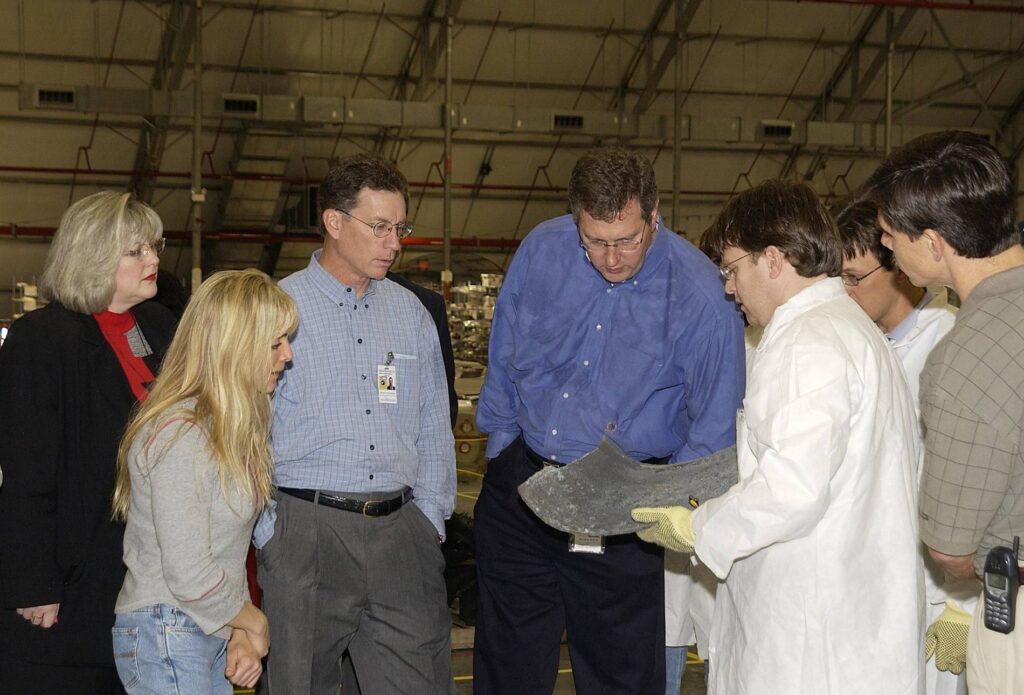STS-107 Space Shuttle Columbia Disaster
In the wake of the reentry mishap, as the Space Shuttle Orbiter Leading Edge Structural Subsystem (LESS) manager, our principal engineer (working for Boeing at the time), was thrust into a crisis on February 1, 2003.


Our principal engineer maintained poise and integrity under extraordinary pressure from the extensive involvement with the mishap investigation during the ill-fated shuttle mission as well as the years that followed, including numerous testimonies, depositions, and inquiries before the Columbia Accident Investigation Board (CAIB), the National Transportation Safety Board (NTSB), Federal Aviation Administration (FAA), Stafford-Covey Return-to-Flight (RTF) Task Force, NASA Engineering Safety Center (NESC), and Office of the Inspector General (OIG).
The initial work included reconstruction of the Orbiter leading-edge structural subsystem, performing and supporting internal and external audits, root-cause and contributor identification, a recreation of the impact event, and serving as a technical advisor to the CAIB board members as well as their technical consultant on account of authoring a massive handbook on reinforced carbon-carbon (RCC).
The Orbiter wing leading edge reconstruction effort required an overwhelming integration of fabrication and installation drawings to be able to efficiently identify and place the recovered debris. The reconstruction effort is thoroughly captured in the CAIB Report Volume 2. Below is a picture of our principal engineer (right) holding the wing leading edge component to then-Shuttle Program Manager Ron Dittemore (far left) and the Orbiter Project Office Manager Ralph Roe (left).
The reinforced carbon-carbon (RCC) panel outboard rib segment (ID 1419) was determined to be from the right hand panel 8 location with oxidation on the spar side of the panel only. This was an important discriminator to the reconstruction effort on account of the erosive and ablative damage to the left wing from reentry plasma heating and was
confirmed to be of the location of the breach in the heatshield that doomed the spacecraft and its crew.

Lessons learned were applied to hardening methods, improved inspections, and organizational changes to forge the establishment of a sustainable protocol to return the remaining Space Shuttle fleet to routine service in two years.
